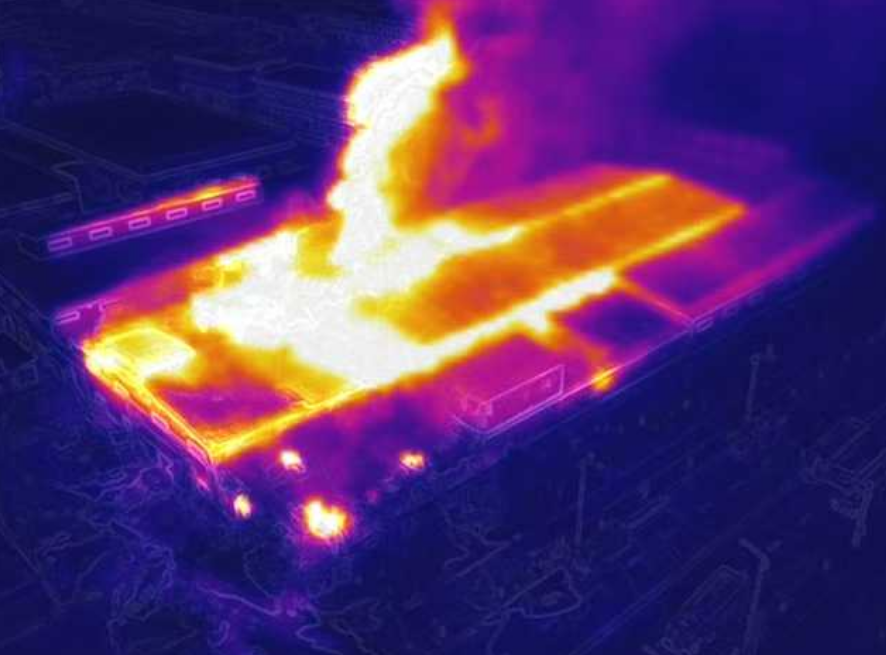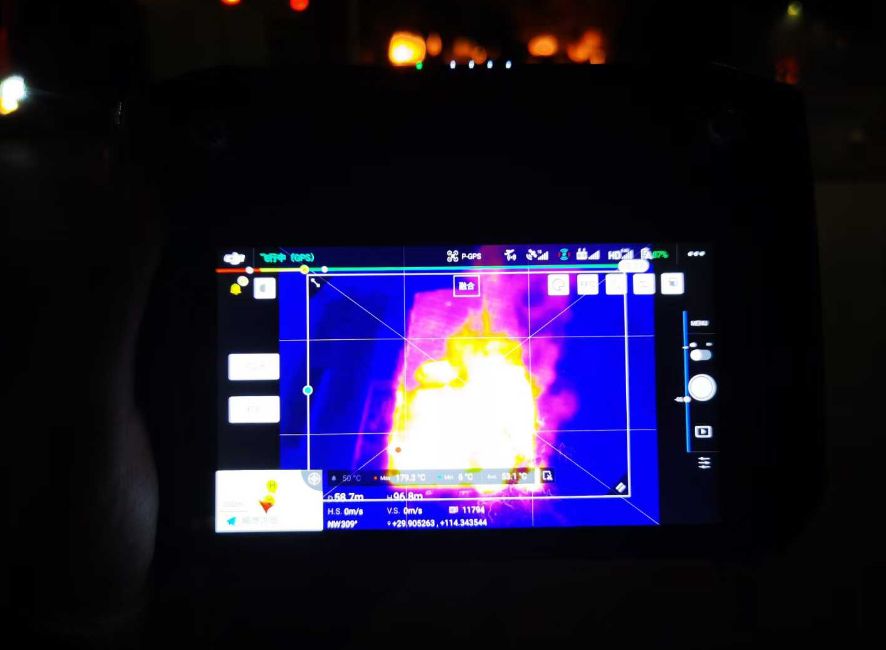In the high temperature environment of the fire scene, high-quality protective equipment can effectively reduce the damage to firefighters and escapees. Thermal imagers can simulate the performance of fire suits in fires and test their thermal insulation and flame retardant properties to ensure that fire suits can protect the safety of firefighters under extreme conditions. Thermal imagers have non-contact temperature measurement functions, which can accurately measure the performance of fire suits at different temperatures, and then evaluate whether they meet safety standards.
1. Combustion temperature measurement
Real-time temperature monitoring: During the combustion test of fire suit materials, infrared thermal imagers can measure the temperature distribution on the surface of materials in real time and non-contactly. This helps to understand the heating rate, maximum temperature and temperature change trend of the material during combustion, and provide intuitive data for evaluating the fire resistance of the material.

Locating hot spots: It can quickly and accurately locate hot spots on the surface of the material, which may be the most intense burning areas or potential weak points. Through the analysis of hot spots, the combustion characteristics and failure mechanisms of the material can be further studied.
Comparison of different materials: Different types of fire suit materials can be burned at the same time, which is convenient for comparing their temperature performance under the same combustion conditions, providing a basis for selecting better materials.
2. Performance Testing
Thermal insulation performance evaluation: By measuring the temperature difference between the inner and outer surfaces of the fire suit material during the combustion process, the thermal insulation performance of the material can be evaluated. Good thermal insulation performance can protect firefighters from burns in high temperature environments.
Thermal stability analysis: Observe the temperature change of the material under long-term high temperature to determine its thermal stability. Materials with good thermal stability can maintain good performance at the fire scene and are not easily quickly invalidated due to high temperature.

Detection of defects: Infrared thermal imagers can detect potential defects in fire suit materials, such as uneven thickness, bubbles, impurities, etc. These defects may affect the performance of the material, and thermal imaging detection can be used to detect and improve them in time.
In short, infrared thermal imagers provide an efficient and accurate means for combustion temperature measurement and performance testing of fire suit materials, which helps to improve the quality and safety of fire suits and provide better protection for the life safety of firefighters. Infrared thermal imagers play an important role in combustion temperature measurement and performance testing of fire suit materials, and help evaluate the fire resistance, thermal protection and safety of materials by providing real-time and accurate temperature data. Whether it is fire resistance testing, thermal protection performance testing, or material defect detection, infrared thermal imaging cameras are indispensable and important tools to ensure the safety and reliability of firefighters in fires.

